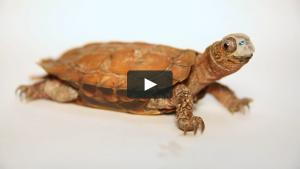Prosthetics for Pets
- posted: May 31, 2019

In keeping with my recent theme of technological advances for pets with Televet remote medicine and the Freestyle Libre glucose monitor, let’s talk about the use of 3-D printers in veterinary medicine. While this is not something that Patton Veterinary Hospital offers, it is becoming more commonplace that veterinary schools and specialty referral centers are starting to use 3-D printers to create models of body parts to aid in planning complicated surgeries and for creating prosthetic limbs and other body parts for animals.
Pets who have either been born without a limb or who lose a leg due to an accident or cancer do adapt very well and can function quite nicely on three legs. But, in some cases, the shift in the pet’s weight or body position can cause pain in other areas such as the neck or back and put strain on the pet’s other legs. Large dogs who lose a front limb also sometimes have more difficulty maneuvering as they are somewhat “front heavy.” If by some circumstance a pet loses more than one limb, he or she would be unable to get around without some type of aid. A prosthetic limb (or limbs) would allow for better mobility for these patients.
Prosthetic limbs for pets have been around for some time, but many obstacles have made them somewhat impractical to use. The cost of creating a prosthetic limb was often prohibitive to practical use and, the limb needs to either be surgically attached to the pet’s existing bone as a type of permanent implant, or it needs to be strapped on or fitted in such a way that it does not slip off during use. These issues present unique challenges to using prosthetics, but advances are always on the horizon.
The use of 3-D printers has allowed custom prosthetics to be formed that are unique to the pet that needs them. Limbs, flippers, beaks, tails and even plates to cover skull defects have been created in recent years using 3-D printers. In addition, the cost of 3-D printers has been falling making them much more affordable to use.
As this technology becomes more affordable and more widely available, we may see fewer three-legged pets and many more with “bionic” limbs.
Read more about it with these links:
https://www.veterinarypracticenews.com/getting-a-leg-up/
This blog brought to you by the Patton Veterinary Hospital serving Red Lion, York and the surrounding communities.
Location
Patton Veterinary Hospital
425 E Broadway
Red Lion, PA 17356
